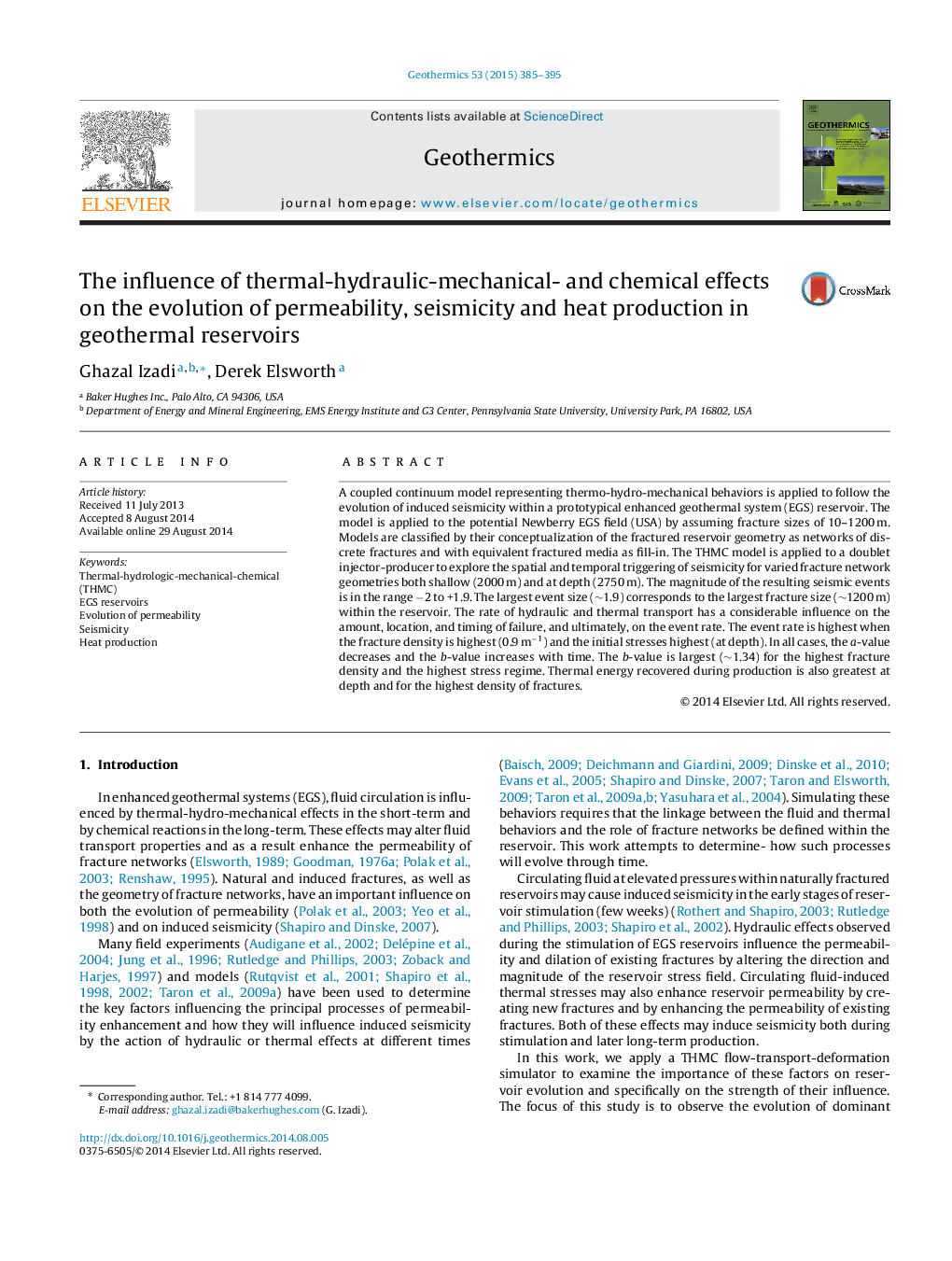| کد مقاله | کد نشریه | سال انتشار | مقاله انگلیسی | نسخه تمام متن |
|---|---|---|---|---|
| 1742277 | 1521915 | 2015 | 11 صفحه PDF | دانلود رایگان |
• Thermal effects impact induced seismicity at midterm during production.
• Distribution of seismicity due to both pressure and thermal effects.
• Fracture density, spacing and orientation alter the evolution of seismicity.
• Permeability evolution controlled by stress regime and fracture network geometry.
A coupled continuum model representing thermo-hydro-mechanical behaviors is applied to follow the evolution of induced seismicity within a prototypical enhanced geothermal system (EGS) reservoir. The model is applied to the potential Newberry EGS field (USA) by assuming fracture sizes of 10–1200 m. Models are classified by their conceptualization of the fractured reservoir geometry as networks of discrete fractures and with equivalent fractured media as fill-in. The THMC model is applied to a doublet injector-producer to explore the spatial and temporal triggering of seismicity for varied fracture network geometries both shallow (2000 m) and at depth (2750 m). The magnitude of the resulting seismic events is in the range −2 to +1.9. The largest event size (∼1.9) corresponds to the largest fracture size (∼1200 m) within the reservoir. The rate of hydraulic and thermal transport has a considerable influence on the amount, location, and timing of failure, and ultimately, on the event rate. The event rate is highest when the fracture density is highest (0.9 m−1) and the initial stresses highest (at depth). In all cases, the a-value decreases and the b-value increases with time. The b-value is largest (∼1.34) for the highest fracture density and the highest stress regime. Thermal energy recovered during production is also greatest at depth and for the highest density of fractures.
Journal: Geothermics - Volume 53, January 2015, Pages 385–395
